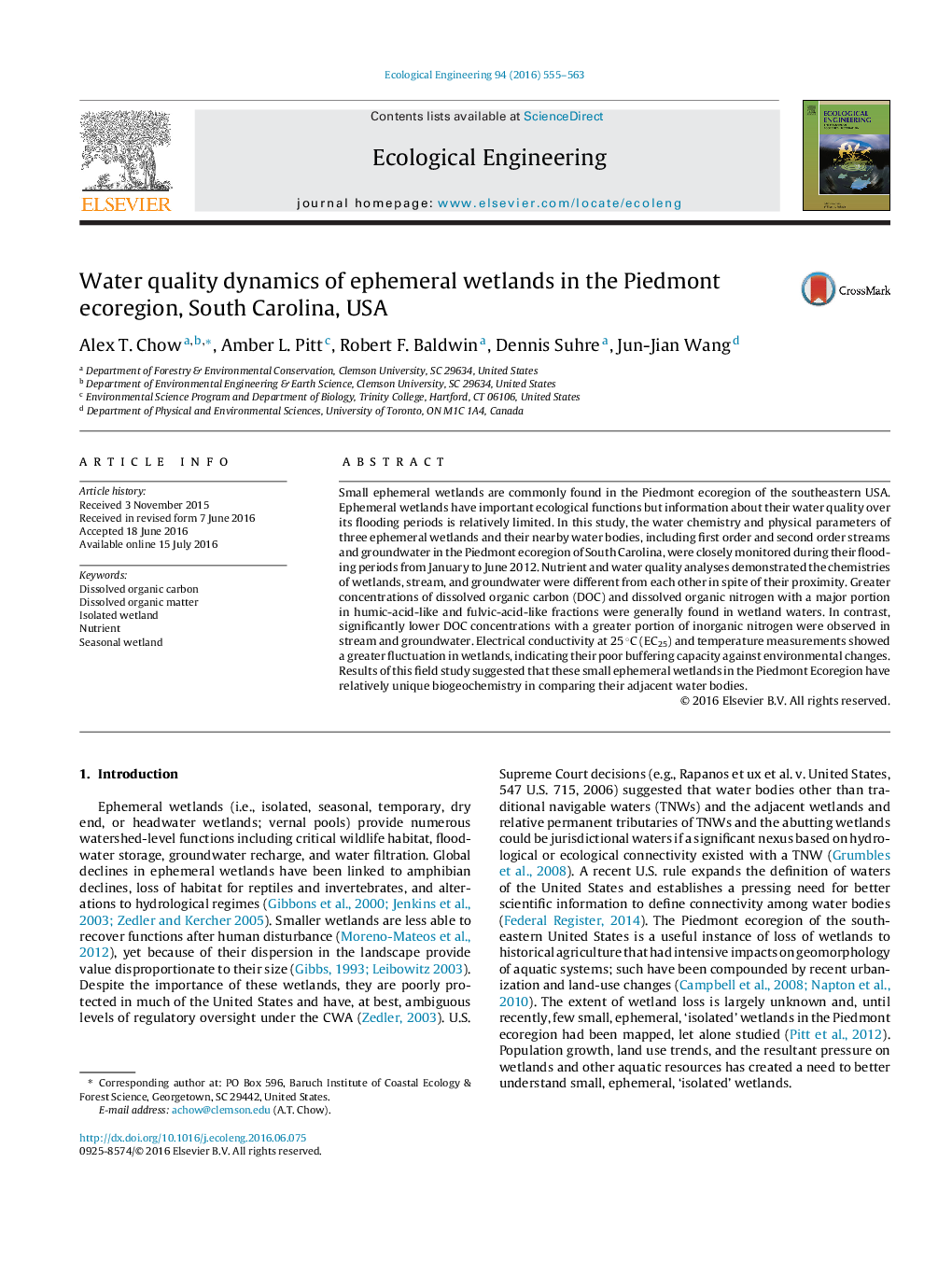| Article ID | Journal | Published Year | Pages | File Type |
|---|---|---|---|---|
| 4388583 | Ecological Engineering | 2016 | 9 Pages |
Small ephemeral wetlands are commonly found in the Piedmont ecoregion of the southeastern USA. Ephemeral wetlands have important ecological functions but information about their water quality over its flooding periods is relatively limited. In this study, the water chemistry and physical parameters of three ephemeral wetlands and their nearby water bodies, including first order and second order streams and groundwater in the Piedmont ecoregion of South Carolina, were closely monitored during their flooding periods from January to June 2012. Nutrient and water quality analyses demonstrated the chemistries of wetlands, stream, and groundwater were different from each other in spite of their proximity. Greater concentrations of dissolved organic carbon (DOC) and dissolved organic nitrogen with a major portion in humic-acid-like and fulvic-acid-like fractions were generally found in wetland waters. In contrast, significantly lower DOC concentrations with a greater portion of inorganic nitrogen were observed in stream and groundwater. Electrical conductivity at 25 °C (EC25) and temperature measurements showed a greater fluctuation in wetlands, indicating their poor buffering capacity against environmental changes. Results of this field study suggested that these small ephemeral wetlands in the Piedmont Ecoregion have relatively unique biogeochemistry in comparing their adjacent water bodies.
